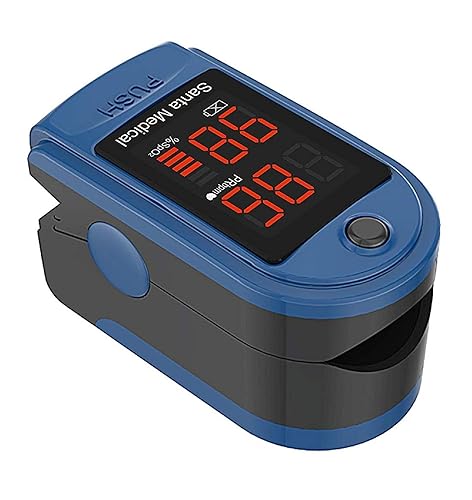Home Healthcare Products
If you looking out for the medicated equipments then this is the right place; the Santa medical provides
all such medical related things, with high quality stuff that lasts long. The Santa medical has wide and
huge varieties of wheelchairs, rollator along with the medicated cushions and blood pressure monitoring
machines, which will provide comfort to the old age people and other patients too. The Santa medical
also deals in marketing of thermometer, the fetal Doppler and even pulse oximeter. A wide range of
weighing machines and tens units are also made available on the demands of the customers.
What your blood oxygen level shows
Your blood oxygen level is a measure of how much oxygen your red blood cells are carrying. Your body closely regulates your blood oxygen level. Maintaining the precise balance of oxygen-saturated blood is vital to your health.

Most children and adults don’t need to monitor their blood oxygen level. In fact, many doctors won’t check it unless you’re showing signs of a problem, like shortness of breath or chest pain.
However, people with chronic health conditions many need to monitor their blood oxygen level. This includes asthma, heart disease, and chronic obstructive pulmonary disease (COPD). In these cases, monitoring your blood oxygen level can help determine if treatments are working, or if they should be adjusted.
Keep reading to learn where your blood oxygen level should be, what symptoms you may experience if your level is off, and what happens next.
How your blood oxygen level is measured
Your blood oxygen level can be measured with two different tests:
Arterial blood gas
An arterial blood gas (ABG) test is a blood test. It measures your blood’s oxygen level. It also can detect the level of other gases in your blood, as well as the pH (acid/base level). An ABG is very accurate, but it’s invasive.
To get an ABG measurement, your doctor will draw blood from an artery rather than a vein. Unlike veins, arteries have a pulse that can be felt. Also, blood drawn from arteries is oxygenated. Blood in your veins isn’t.
The artery in your wrist is used because it’s easily felt compared to others in your body.
The wrist is a sensitive area, making a blood draw there more uncomfortable compared to a vein near your elbow. Arteries are also deeper than veins, adding to the discomfort.
Pulse oximeter
A pulse oximeter (pulse ox) is a noninvasive device that estimates the amount of oxygen in your blood. It does so by sending infrared light into capillaries in your finger, toe, or earlobe. Then it measures how much light is reflected off the gases.
A reading indicates what percentage of your blood is saturated. This test has a 2 percent error window. That means the reading may be as much as 2 percent higher or lower than your actual blood oxygen level. This test may be slightly less accurate, but it’s very easy for doctors to perform. So doctors rely on it for fast readings.
Things like dark nail polish or cold extremities can cause the pulse ox to read lower than normal. Your doctor may remove any polish from your nails before using the machine or if your reading seems abnormally low.
Because a pulse ox is noninvasive, you can perform this test yourself. You can purchase pulse oximeter devices at most stores that carry health-related products or online. Talk to your doctor before using a home device so that you understand how to interpret the results.
Where your blood oxygen level should fall
A measurement of your blood oxygen is called your oxygen saturation level. In medical shorthand, you may hear it called your PaO2 on a blood gas and an O2 sat when using a pulse ox. These guidelines will help you understand what your result might mean:
Normal: A normal ABG oxygen level for healthy lungs falls between 80 and 100 millimeters of mercury (mm Hg). If a pulse ox measured your blood oxygen level, a normal reading is typically between 95 and 100 percent.
However, in COPD or other lung diseases, these ranges may not apply. Your doctor will let you know what is normal for your specific condition. For example, it isn’t uncommon for people with severe COPD to maintain their pulse ox levels between 88 to 92 percent Trusted Source.
Below normal: A below-normal blood oxygen level is called hypoxemia. Hypoxemia is often cause for concern. The lower the oxygen level, the more severe the hypoxemia. This can lead to complications in body tissue and organs.
Normally, a PaO2 reading below 80 mm Hg or a pulse ox below 95 percent is considered low. It’s important to know what is normal for you, especially if you have a chronic lung condition. Your doctor can provide recommendations as to what ranges of oxygen levels are acceptable for you.
